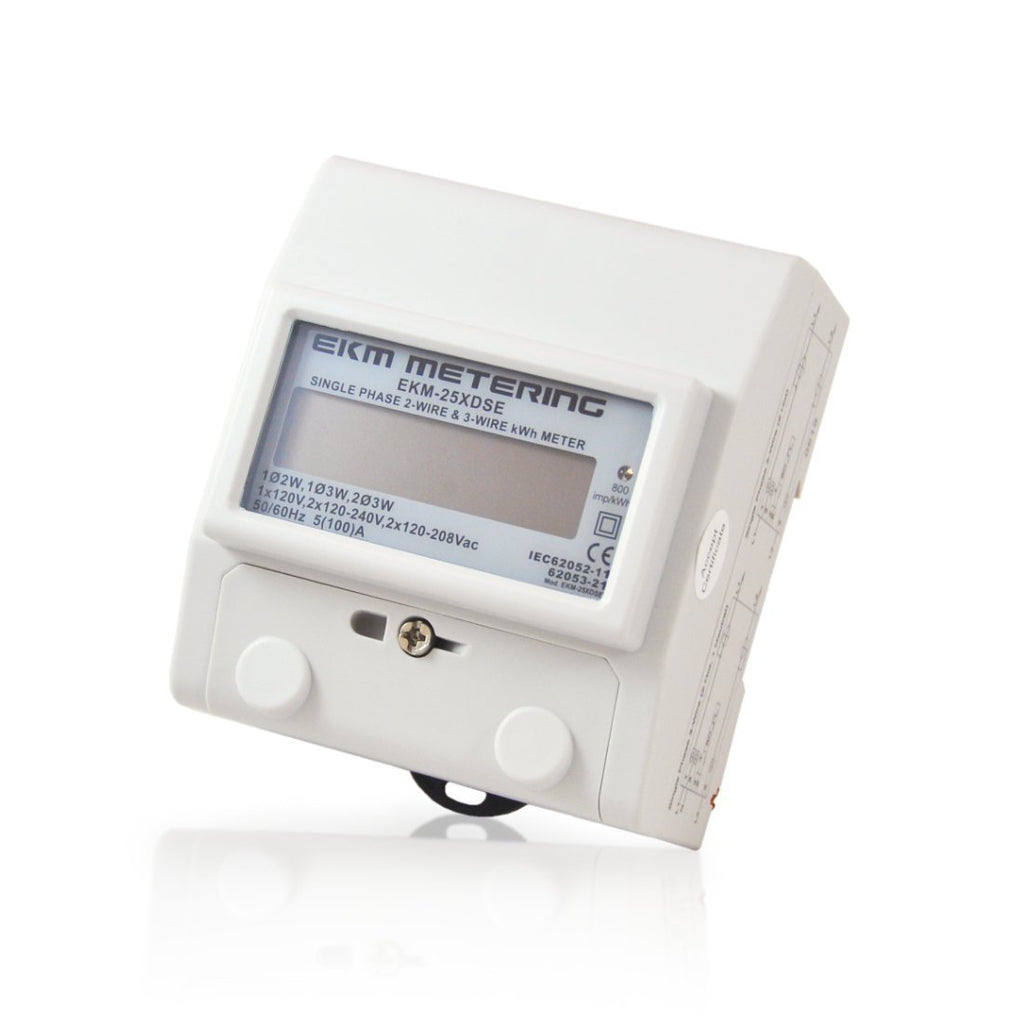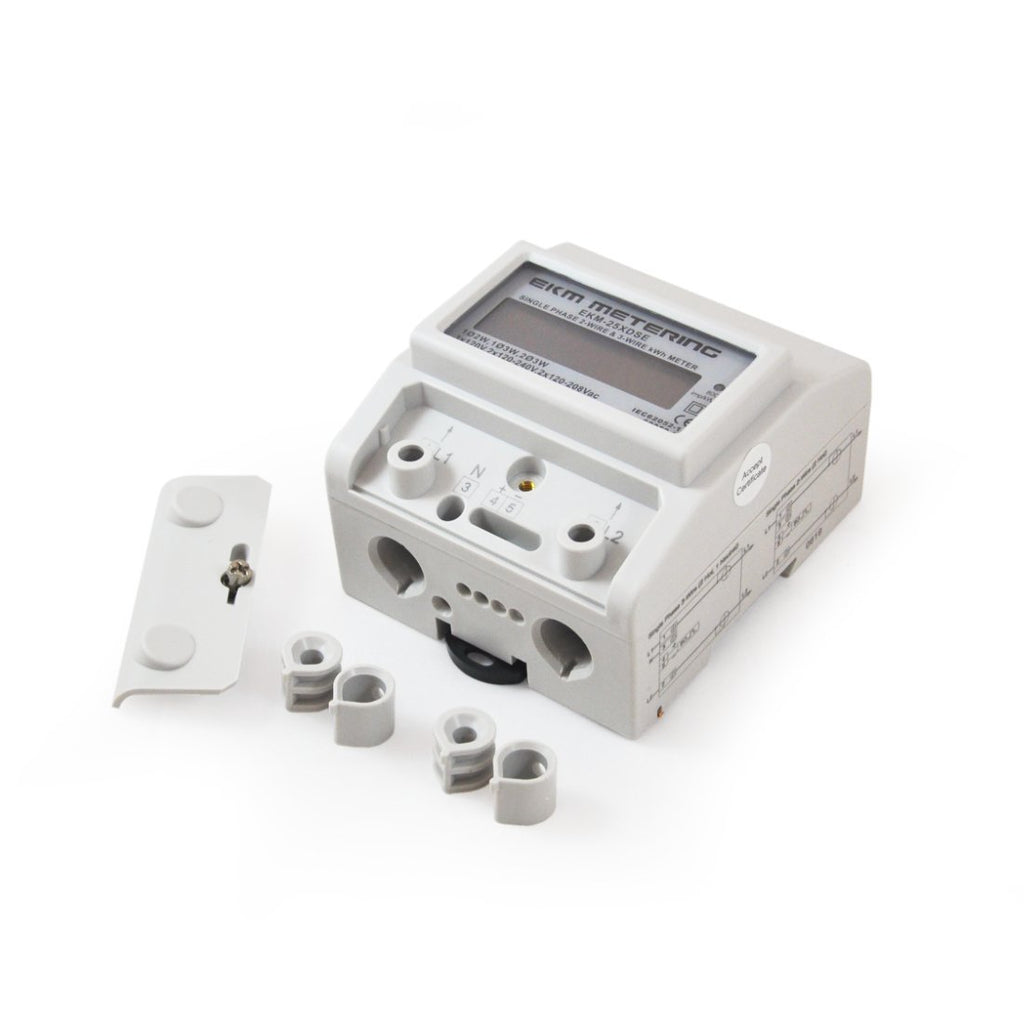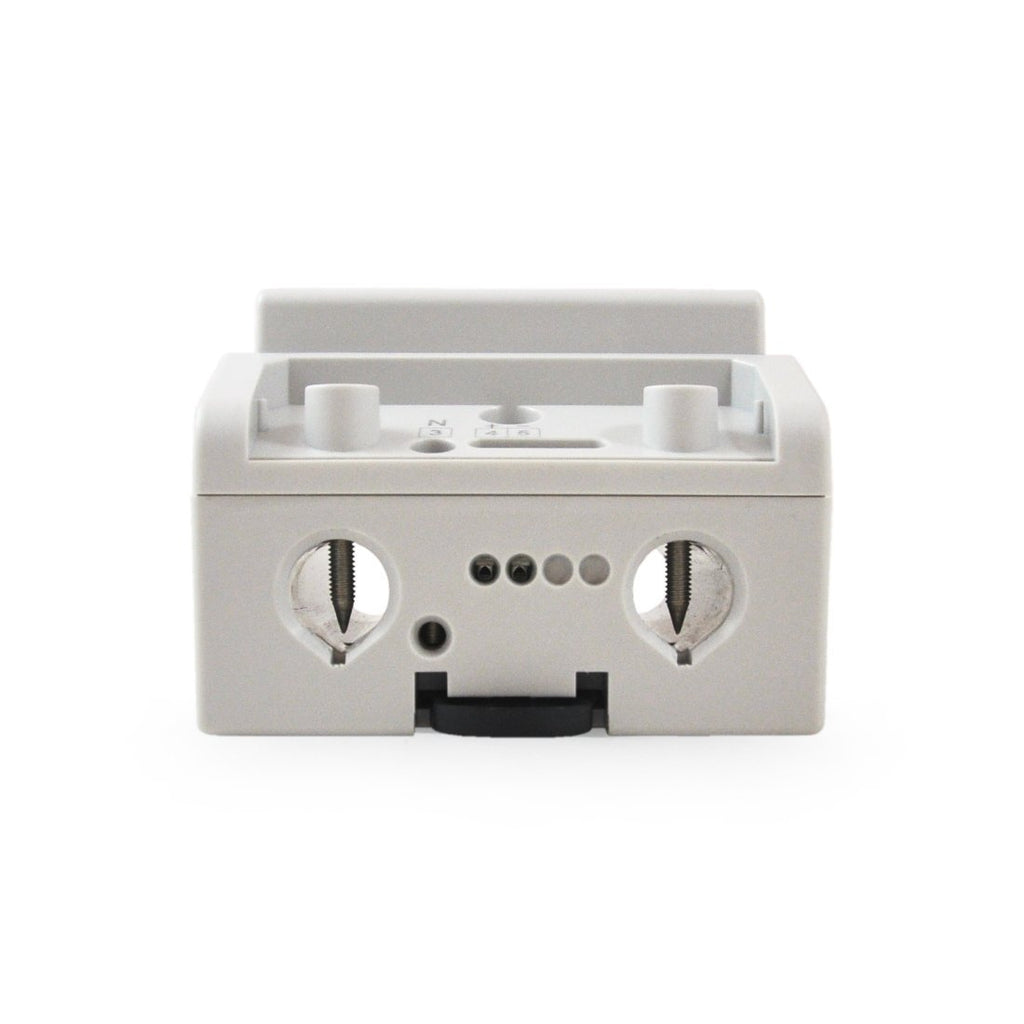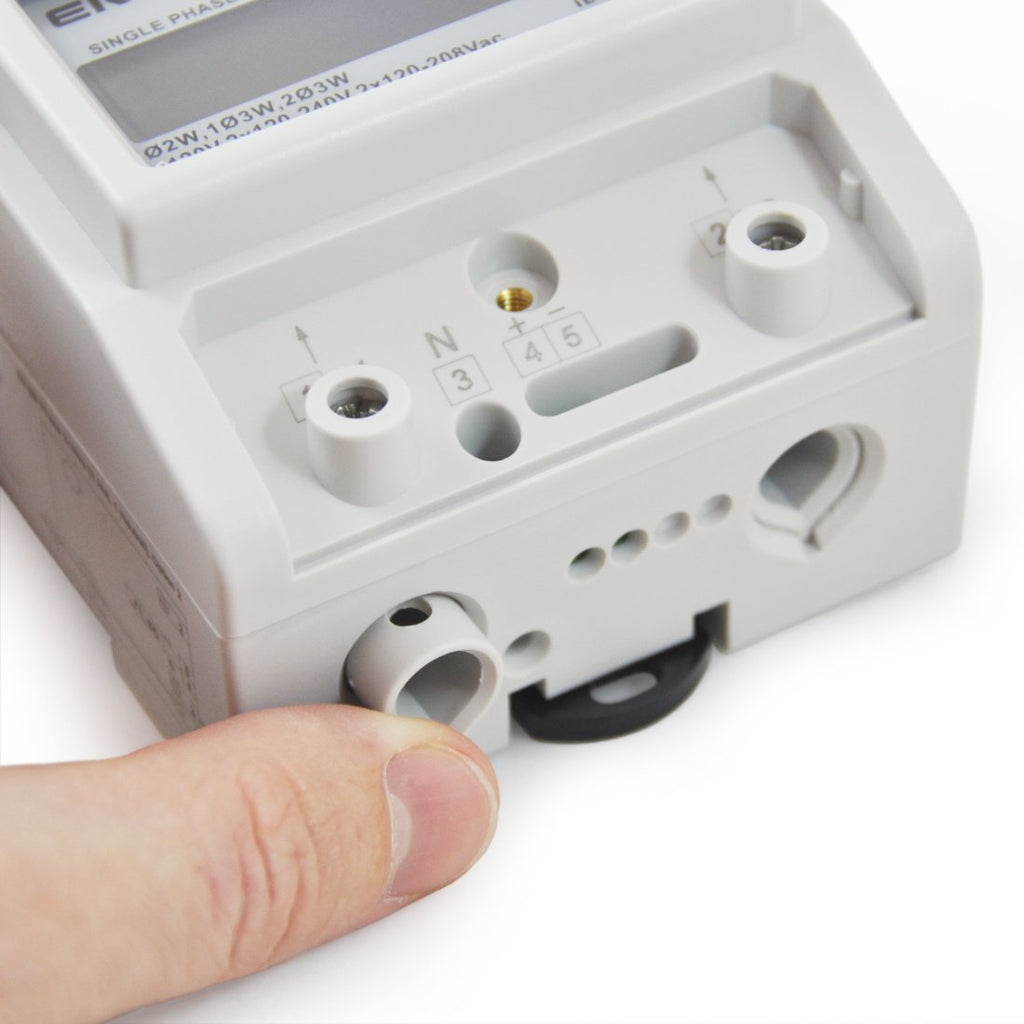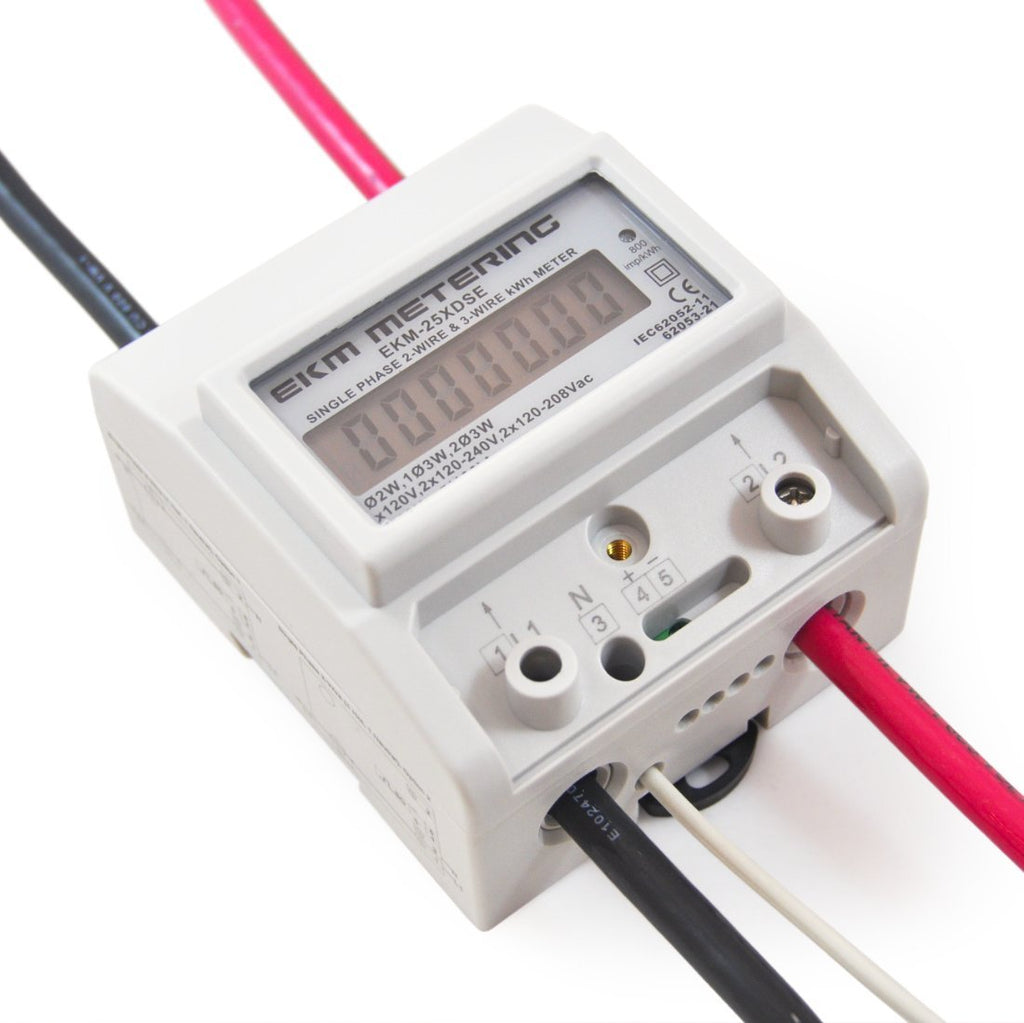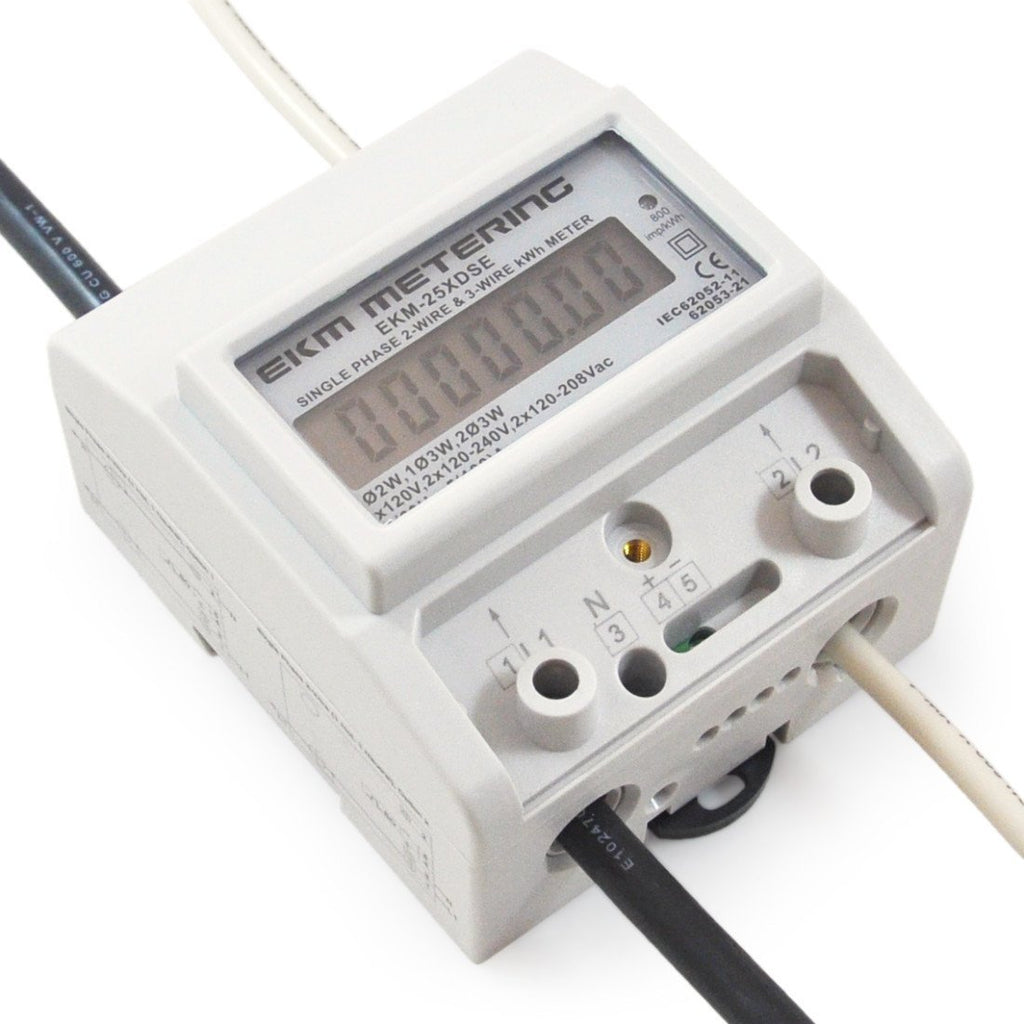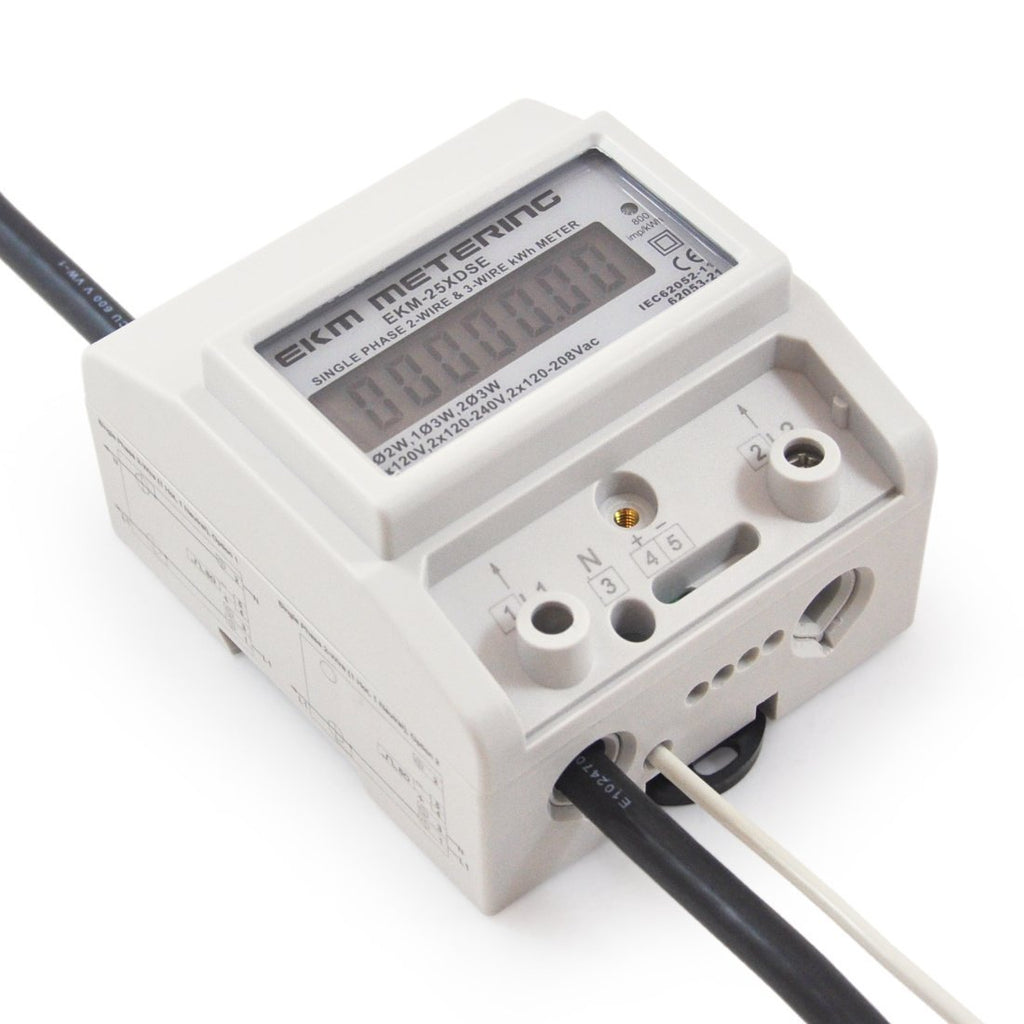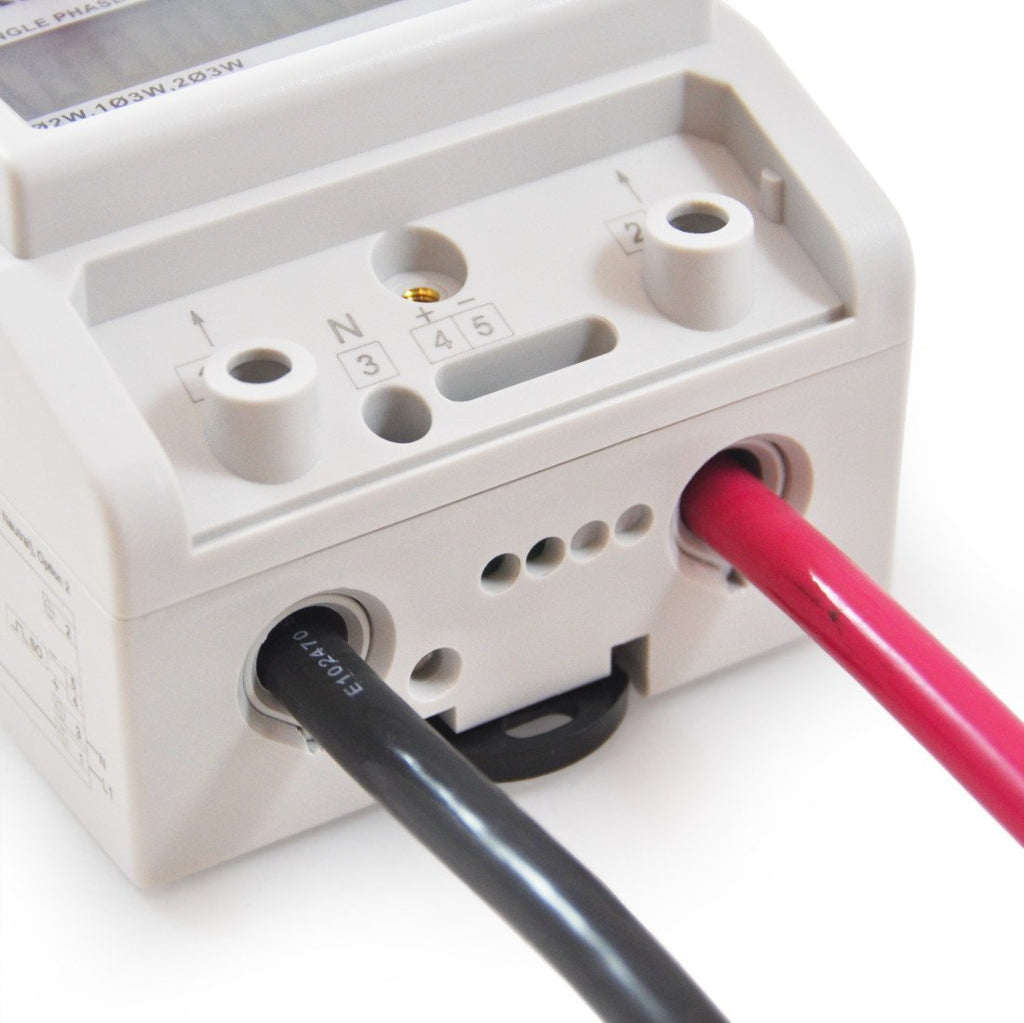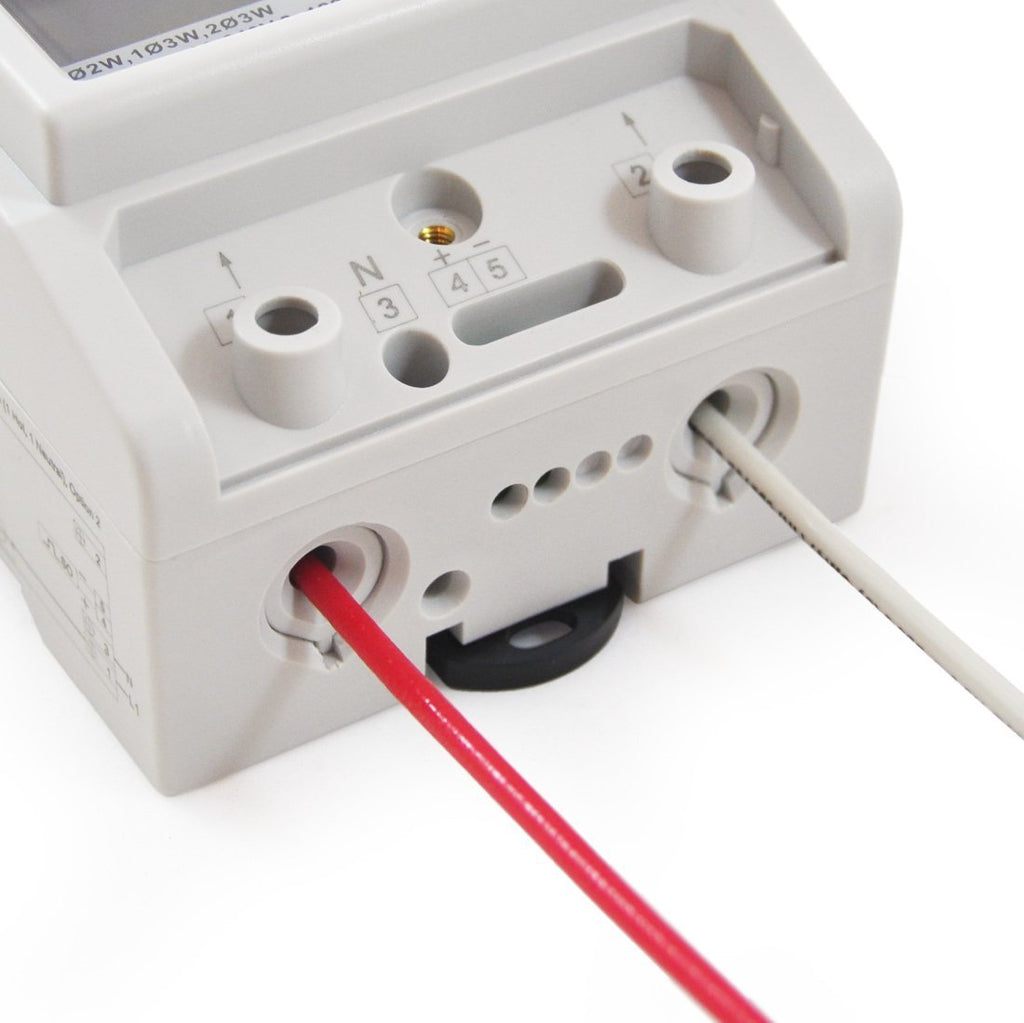Single Phase, Pass-Through kWh Meter, 2 or 3-Wire, 120V up to 120/240V, 100A, 50/60Hz, EKM-25XDSE
Single Phase, Pass Through, kWh Meter –– up to 100A and 13.5mm Wire Diameter. Designed for single phase systems from 120V 2-wire (1 hot, 1 neutral), to 120/240V 3-wire (2 hots, 1 neutral), 100A, 60Hz. Read locally on the LCD display or via pulse output.
View More
More information
Voltage: 120 volts 2-wire, 240 volts 2-wire, 120/240 volts 3-wire
Amperage: Up to 100 amps
Type: Pass-Through, Single-Phase, 50/60Hz
Data: Pulse Output - 800 pulses per kWh
Model: EKM-25XDSE
This new meter model has been designed to replace both of our legacy single phase pass-though kWh meters (EKM-25IDS and EKM-15IDS). The EKM-25XDSE replaces the functionality of both of these legacy meters and offers a number of additional improvements to their designs.
Compact and very easy to install. Simple DIN-Rail Mounting. Wires pass through 13.7mm (0.5 inch) diameter tubes in the meter body -- Will accept 22 AWG – 1 AWG wire. There are two piercing screws that pierce the wires that pass through the meter. The meter comes with two sets of bushings for medium and small wire diameter wires, which keep the wires centered so the piercing screws have no trouble engaging the conductor. The upside-down teardrop shape of the tubes also serves to keep the wires centered.
Single Phase 120/240V 3-Wire (2 hots, 1 neutral):
In this configuration both hot wires pass through the body of the meter. The piercing screws are used to pierce the wire insulation to provide the meter with a voltage reference for each line. There is also a port on the meter for a neutral reference. The meter will function without this connection (at ~1% accuracy) but it will be 0.5% accurate with the neutral connection.
Single Phase 120V or 208-240V 2-Wire (2 hots):
As described above, the meter is designed to meter single phase electrical systems that don't have a neutral available. Both hot wires pass though the body of the meter and the piercing screws are used to pierce the wire insulation to provide voltage references to the meter.
Single Phase 120V or 208-240V 2-Wire (1 hot, 1 neutral):
In this case Line 1 passes though the tube marked L1. The piercing screw is used to pierce the wire insulation for L1 to provide the voltage reference to the meter. The Neutral reference can either pass through the Tube marked L2 or it can be connected to the port marked N. If the neutral passes though the L2 tube then the piercing screw is used to pierce the wire insulation for to provide the neutral reference to the meter.
State-of-the-art, fully solid-state kWh meter with 800 pulse per kWh pulse output.
0.5–1% accuracy dependent on setup (see above), LCD readout in hundredths of a kWh, to 99999.99 kWh. No conversion factor or multiplier.
Non-resettable LCD display. kWh data is maintained through power outages, and for up to 10 years without power.
For more information about our products and services, we encourage you to visit our online Knowledge Base, which provides spec sheets, videos, tutorials, FAQs, diagrams, and more.
EKM-25XDSE Spec Sheet: EKM-25XDSE Spec Sheet
Customer Photo Gallery
Be one of the first to share photos of your installed meters! Click the button below to submit your photos and receive $10 off your next order once your post is approved!

